This post contains affiliate links. If you make a purchase through these links, I may earn a commission at no extra cost to you. Thank you!
In May 2023, during a month of dissertation research on the abandoned villages of the Faroe Islands, I set out to hike all the trails connecting these deserted settlements with civilisation. I wanted to get a physical sense of the isolation and effort it once took to move between communities before roads existed on the archipelago.
I’d already walked most of these historic trails in the past, but one that had remained on my list was the coastal hike from Múli to Skálatoftir on the island of Borðoy. Both villages are abandoned today. Múli, however, wasn’t part of my dissertation since it was inhabited until 2002, which is outside my research timeframe of the 1700s to early 1900s. Skálatoftir, however, was a key site for my fieldwork as it was abandoned in 1914. I had first visited this settlement back in 2016 via a much easier coastal trail from the village of Strond.
The day I chose to tackle the Múli-Skálatoftir route started off slowly. The day before was Eurovision night (and there’s no chance I’d ever miss that!), so I slept in and left Tórshavn for the Northern Isles in the early afternoon. My plan was to hitchhike to Hvannasund and walk the seven-kilometre road to Múli on foot, assuming no one would be driving out that far. But luck was on my side as a kind woman and her two children picked me up and offered to take me all the way. They even stayed to explore Múli while I began my hike. Without their help, I wouldn’t have made it to Skálatoftir before dark!

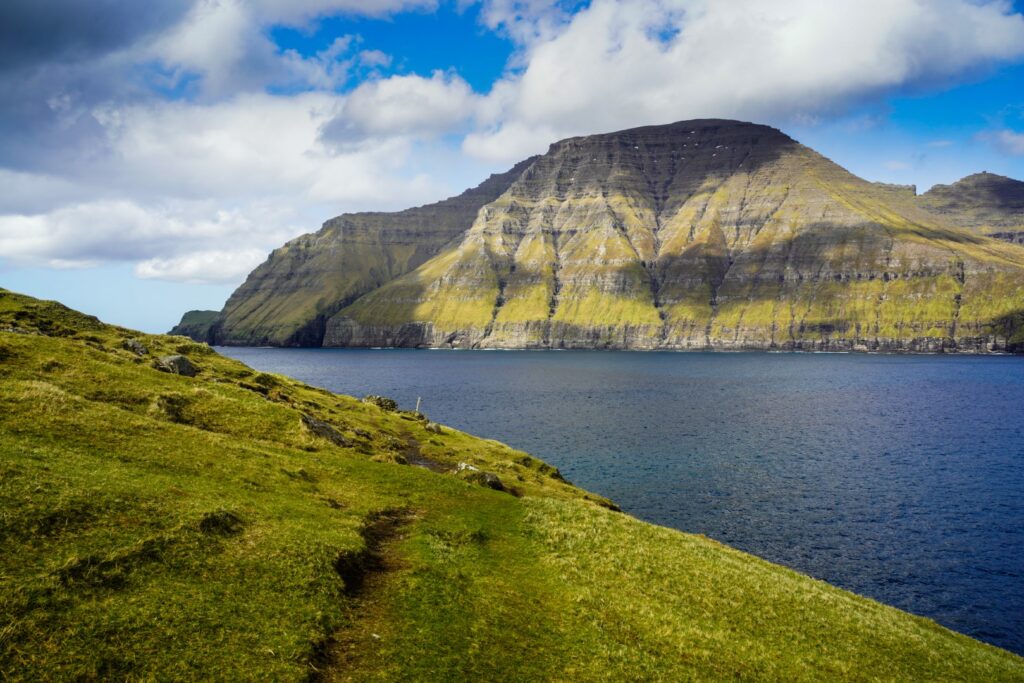
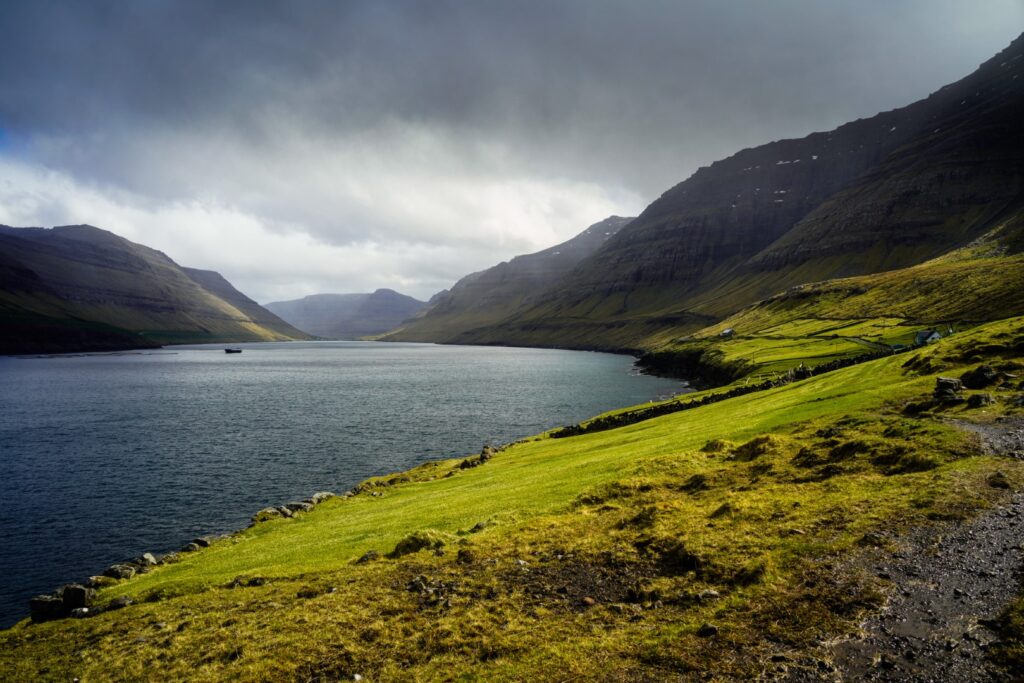
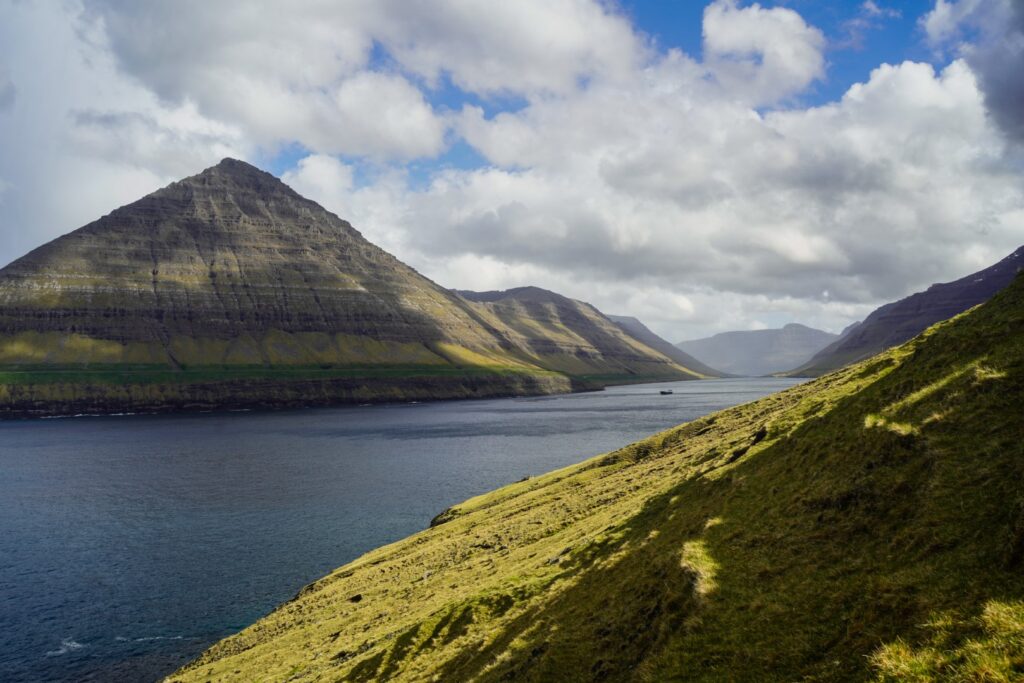
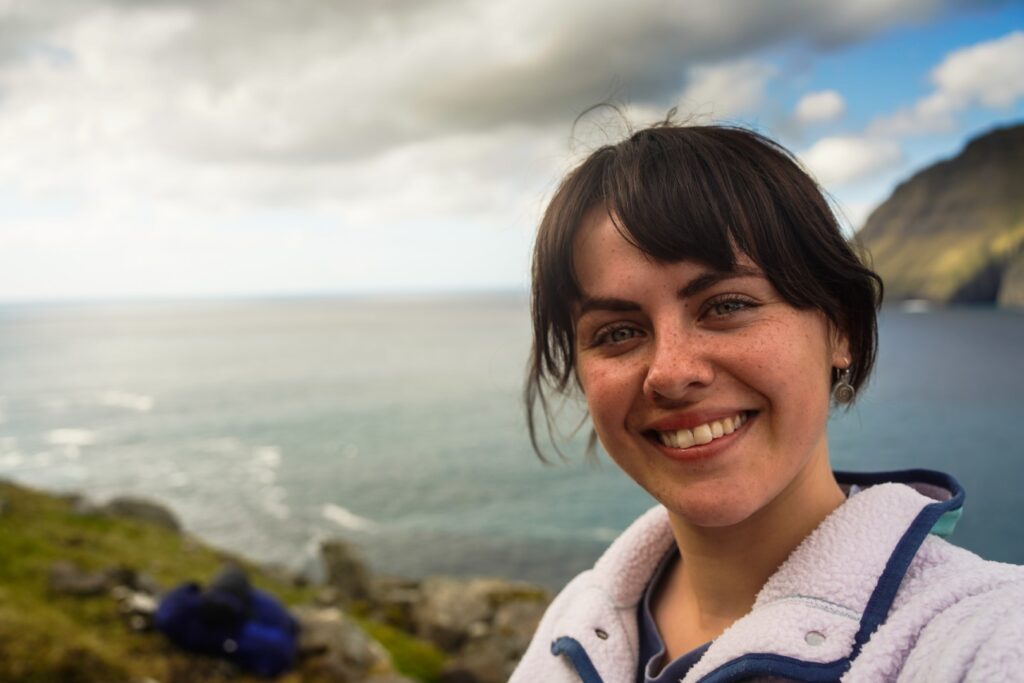
Although the trail between Múli and Skálatoftir is only about six kilometres, it ended up taking me six hours to complete. The trail is steep and narrow, but my slow pace was mainly due to the two heavy backpacks I was carrying, several twisted ankles, and frequent stops to examine the remains of ruined outhouses along the way. I also had to rest often and I lost the trail more than once as it faded into rocky hillsides and sheep tracks.
I hadn’t expected the trail to be as challenging as it was. At times, I was hiking with a sheer drop into the ocean less than a metre to my right. One slip, and I could’ve ended up in the sea. I had to cross several gorges – one of which looked like there’d been a recent landslide, with slippery soil and no real path across. The wind also picked up drastically after I reached the other side of the island, so I slowed down even more and focused on each step.
That said, the views throughout the hike were absolutely breathtaking. One of the best things about hiking at sunset is how it makes gorgeous scenery even more beautiful – and this time was no exception! I had uninterrupted views of most of the Northern Isles, and at one point there was a rainbow over the village of Viðareiði on Viðoy with the dramatic cliffs of Fugloy in the backdrop. My favourite moment was rounding the steep cliffs beneath the mountain Tindur on the northern tip of Borðoy, where Skarðsgjógv – the largest gorge in the Faroes – came into view across the water on Kunoy. Just below that gorge lies another abandoned village, which I’d visited back in 2015 and again a week after this hike!
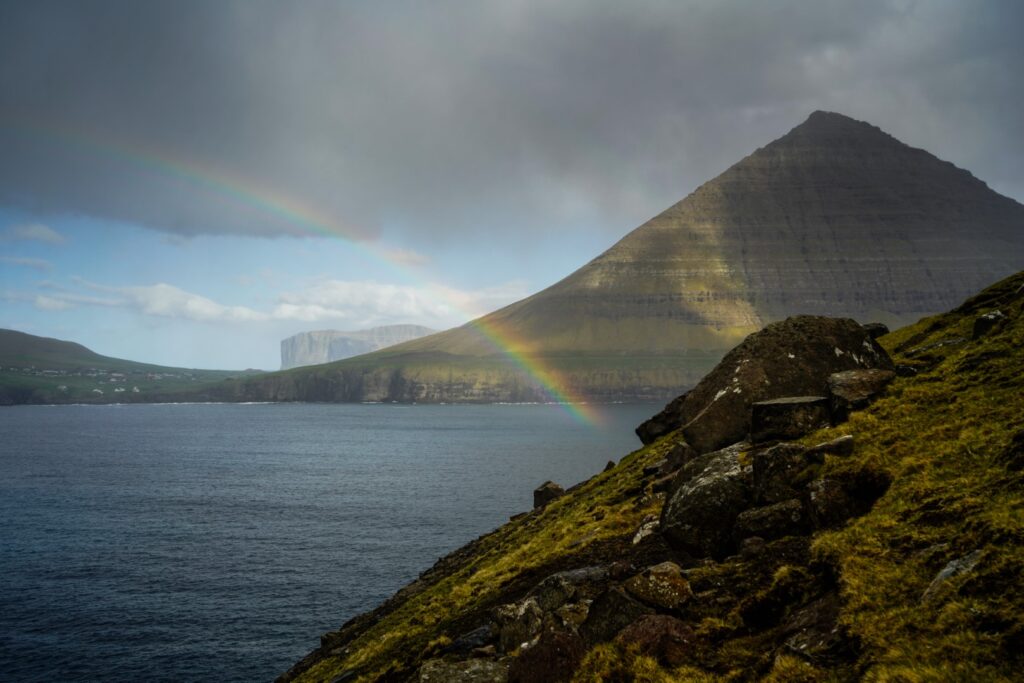
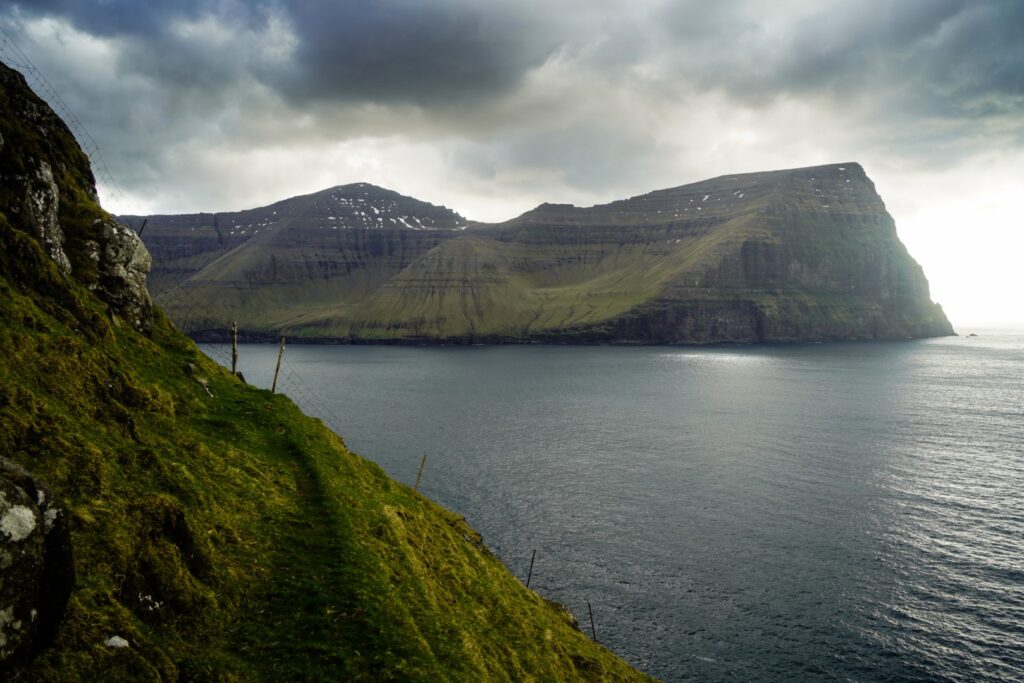


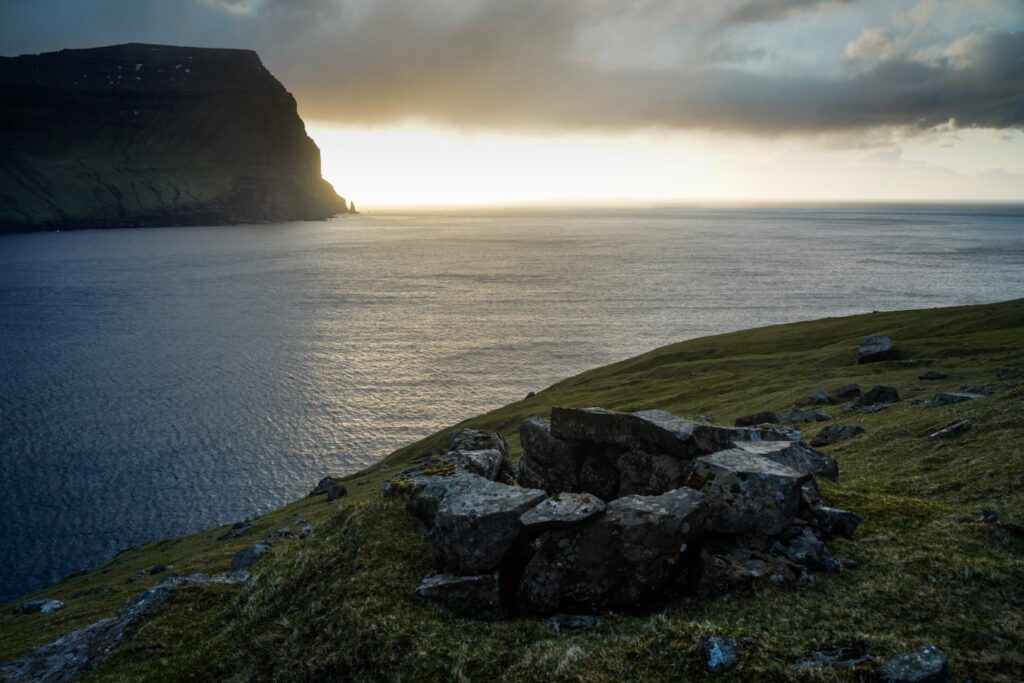
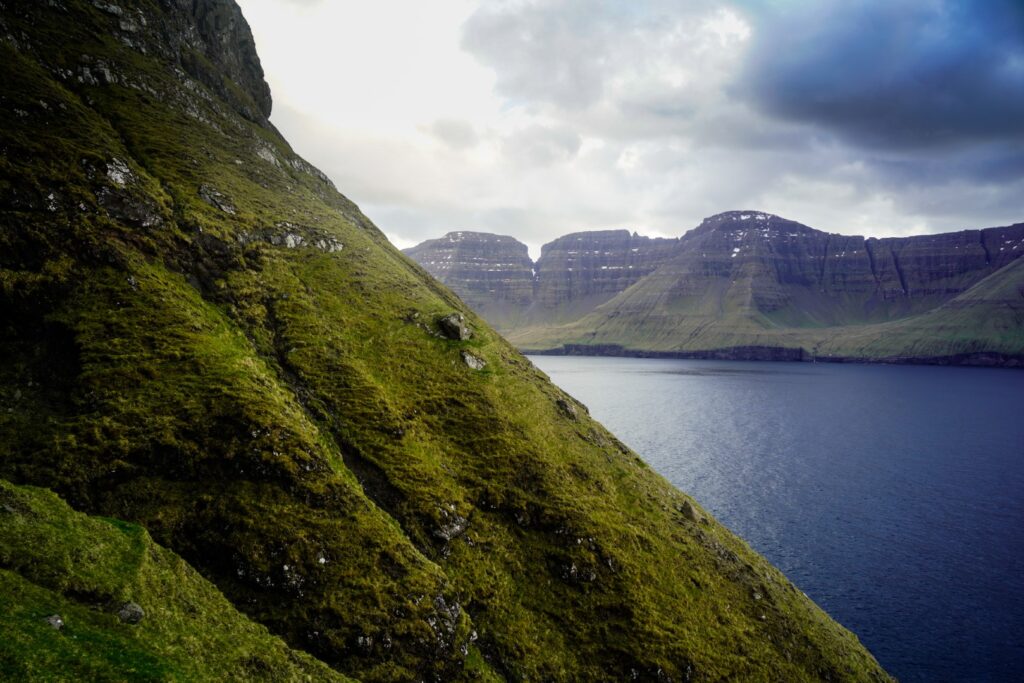

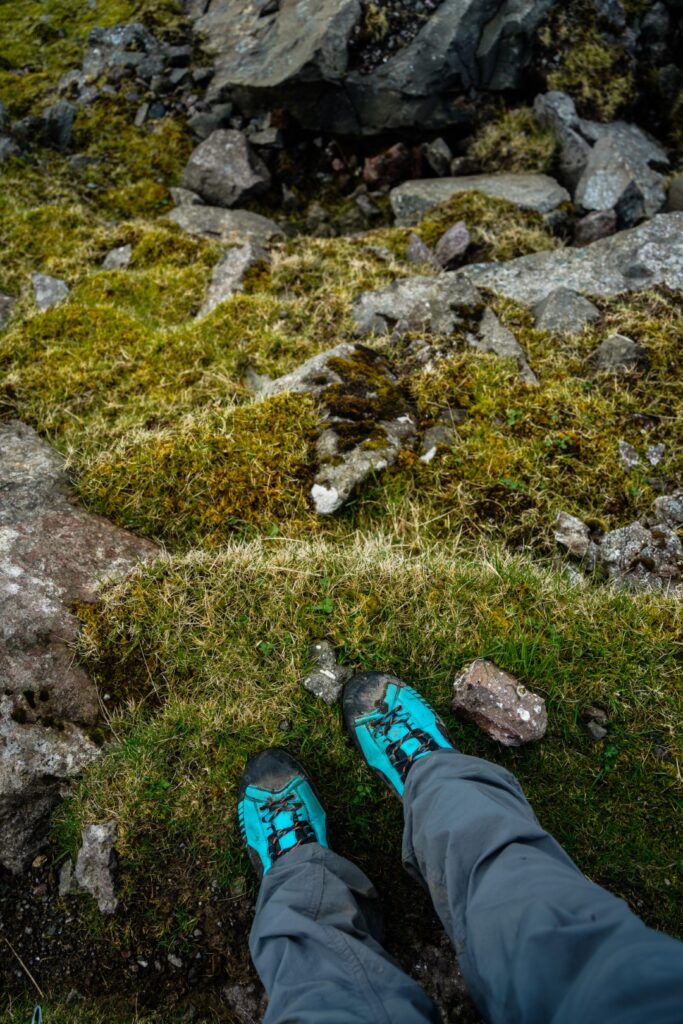
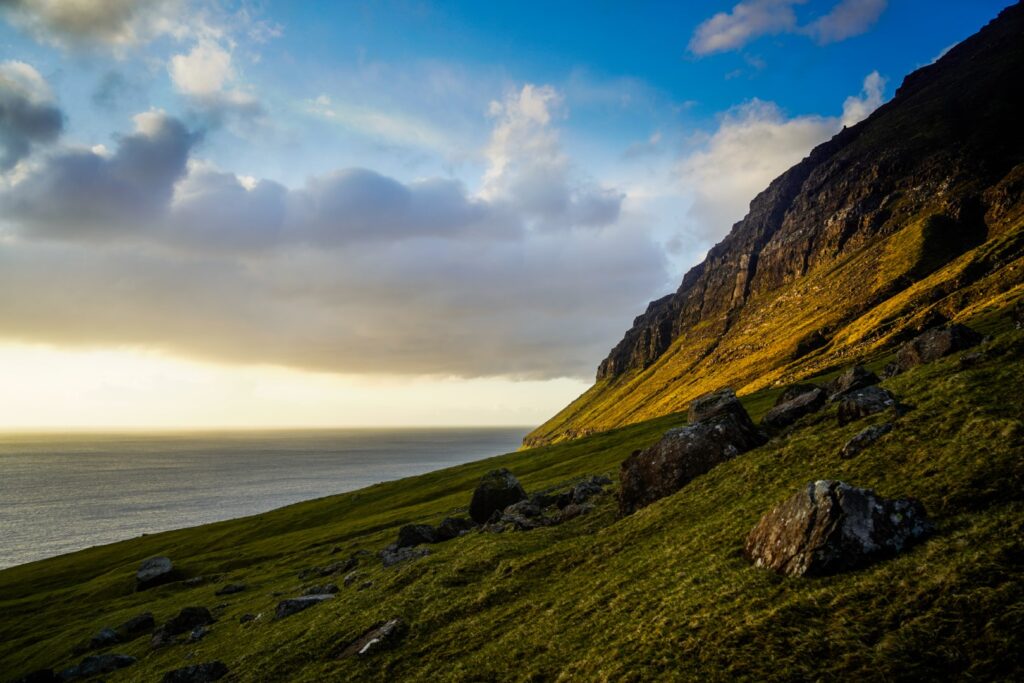
At last, an hour after sunset, I reached Skálatoftir and set up camp among the ruins. As I was pitching my tent, it started raining, and by the time I’d gotten everything inside, it was pouring down. Cozy and dry in my tent, I listened to the rain drumming outside, grateful for my lucky timing.
The next morning, I carried out my fieldwork in the rain and then followed the much easier trail from Skálatoftir to Strond. That six-kilometre stretch was a breeze in comparison to the trail from Múli. I ended the day by pitching my tent in a sheep shelter about 1,5 kilometres from civilization, hoping it would protect me from the strong wind. It didn’t. My tent ended up broken, giving me a strong déjà vu of my first solo trip to the Faroe Islands in 2015, when my tent broke the first night of camping… A classic, truly!
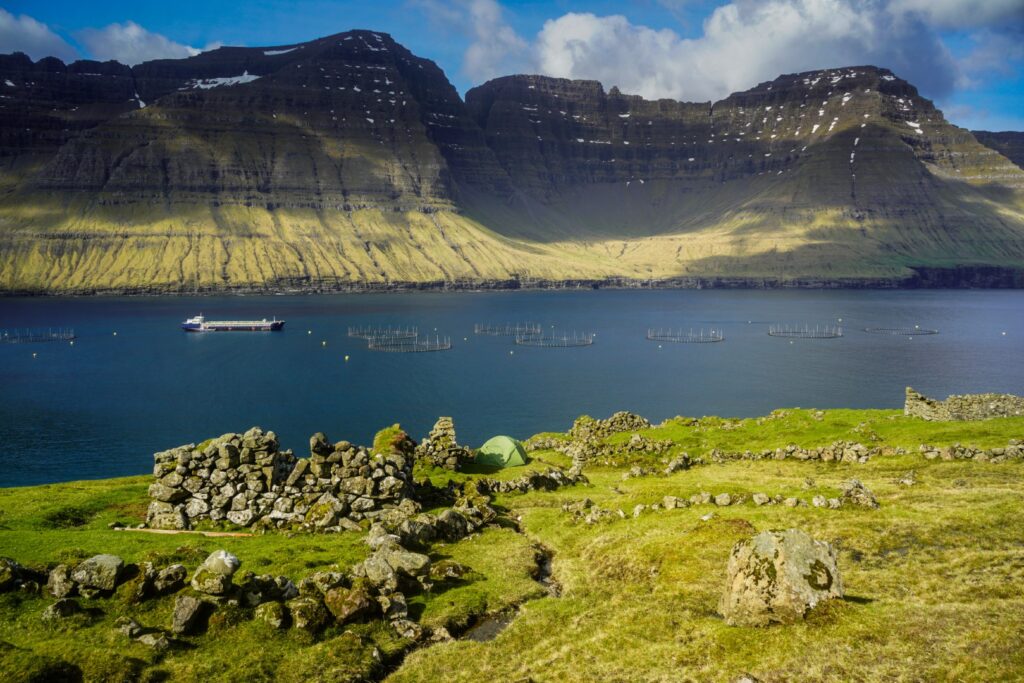
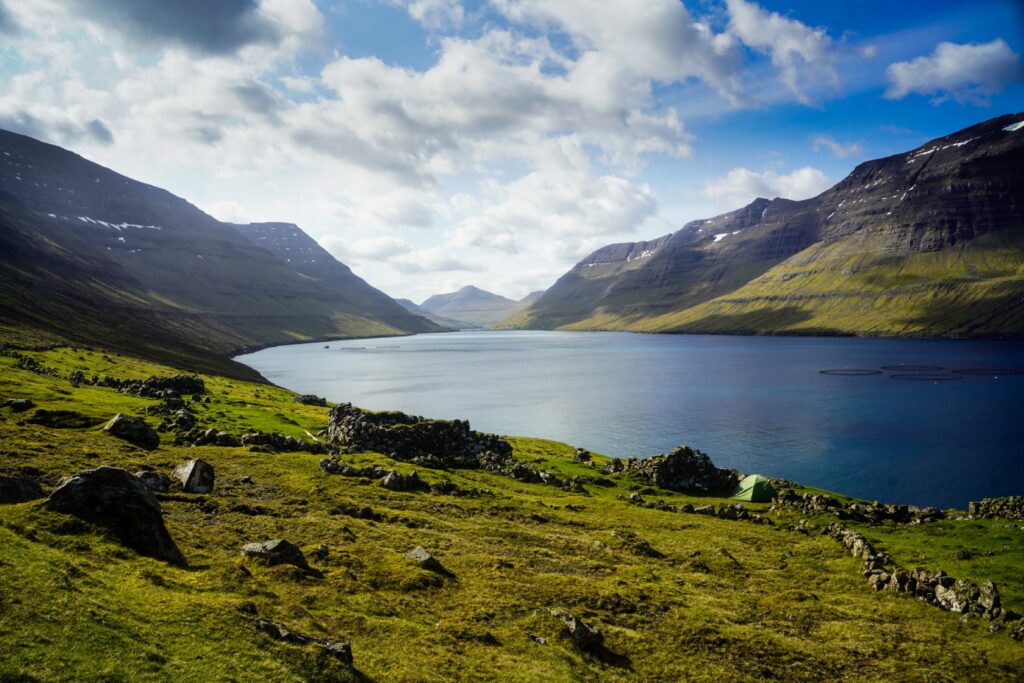
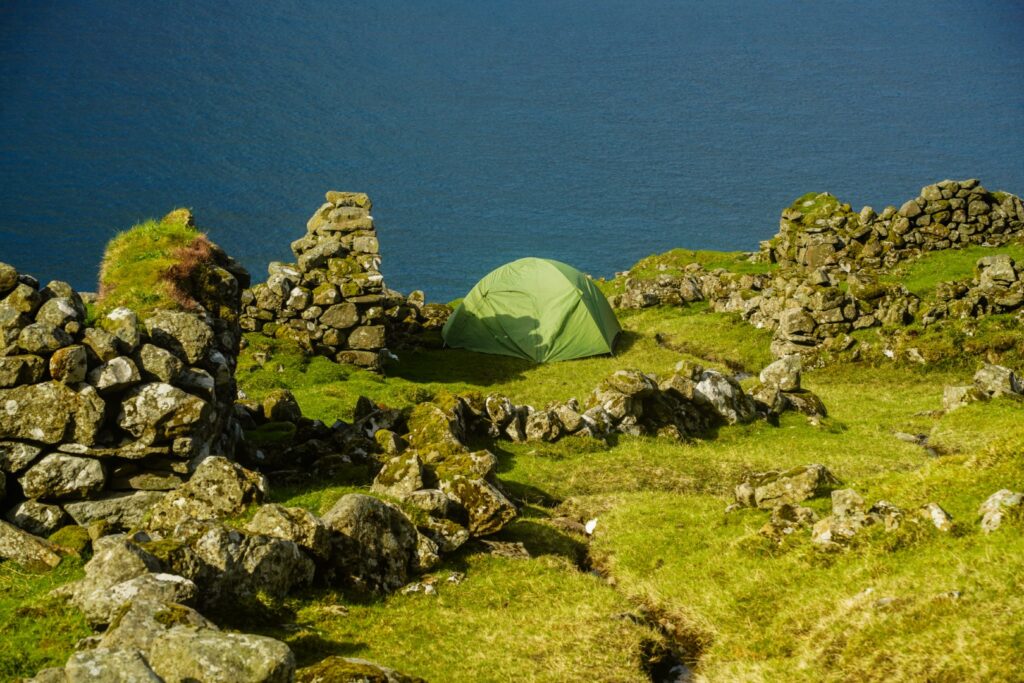
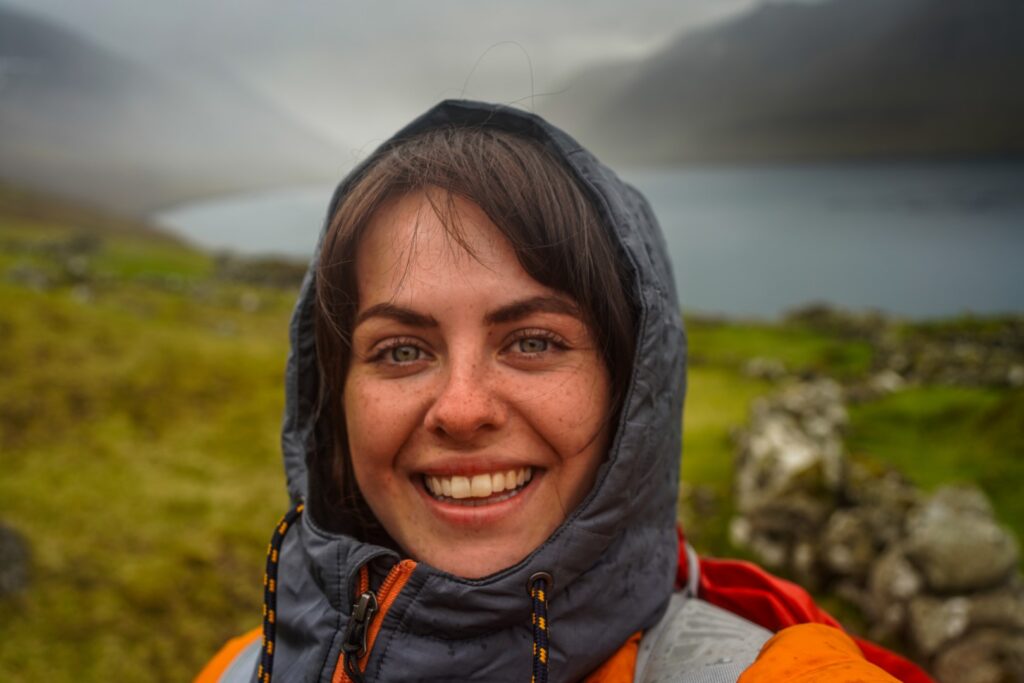
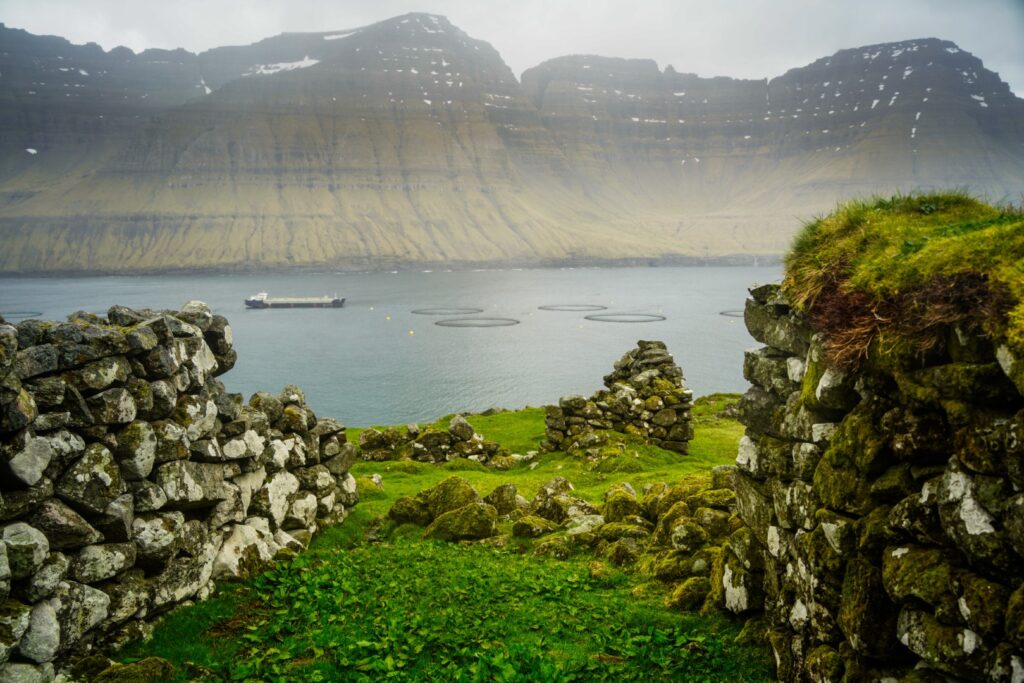
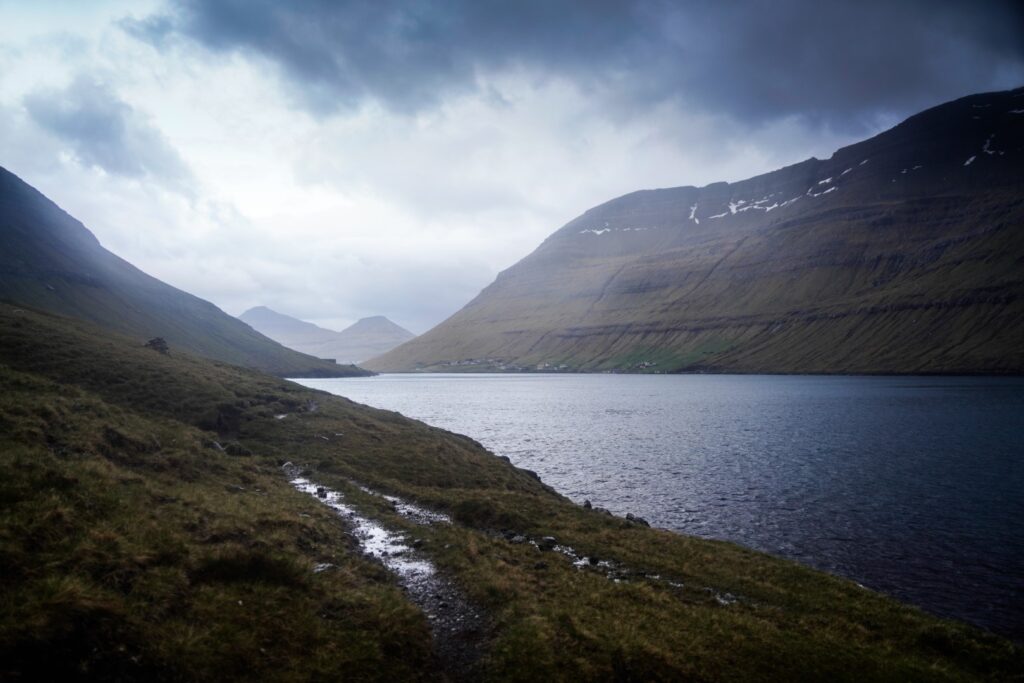
Hiking route description: Múli to Skálatoftir to Strond
The hike begins in the abandoned village of Múli on the island of Borðoy. Follow the road through the village until it turns into a well-trodden footpath. Continue along the trail until you reach a gorge – climb up and cross above it for safety. At this point, the marked trail ends, but you’ll find several sheep tracks that trace the coastline.
Take your time here: the terrain becomes steep and can be slippery, with many deep gorges to cross. For most of the hike, you’ll be walking high above the ocean, often with steep drops just a few steps away. Eventually, you’ll reach a gorge near the ruins of several old outhouses – Skálatoftir lies just beyond.
To return to civilization, you can either retrace your steps to Múli or continue along the much easier six-kilometre trail to the village of Strond. This part of the route stays close to the coast and ends at a paved road. There is a well-defined trail the whole way, and it is considerably easier.
The entire hike is 12 kilometres, takes 6-8 hours depending on your speed and courage, and is of moderate difficulty. There are no major ascents or descents, but the trail from Múli to Skálatoftir is very steep and tough for the feet.
Important: Only attempt this hike in dry, clear weather and if you’re confident hiking in rough, remote terrain. In fog, rain, or strong wind, the trail from Múli to Skálatoftir is very dangerous! However, the trail from Strond is accessible year-round and in any weather.
Looking for tours to Múli and Skálatoftir?
While there are no established tours that go to Skálatoftir, there are two options that include a visit to Múli; a four-hour tour of the Northern Isles with pick-up in Klaksvík (available year-round), and a six-hour tour of the Northern Isles starting in Tórshavn (available from May to September).
If you’d like to include Skálatoftir in your trip, you could consider a personalized tour. The go-as-you-please tour includes a knowledgeable local guide and a fully customizable itinerary tailored to your interests. Alternatively, the personal mountain tour offers a unique hiking experience with a local mountain guide, perfect for exploring trails like the one between Múli and Skálatoftir!
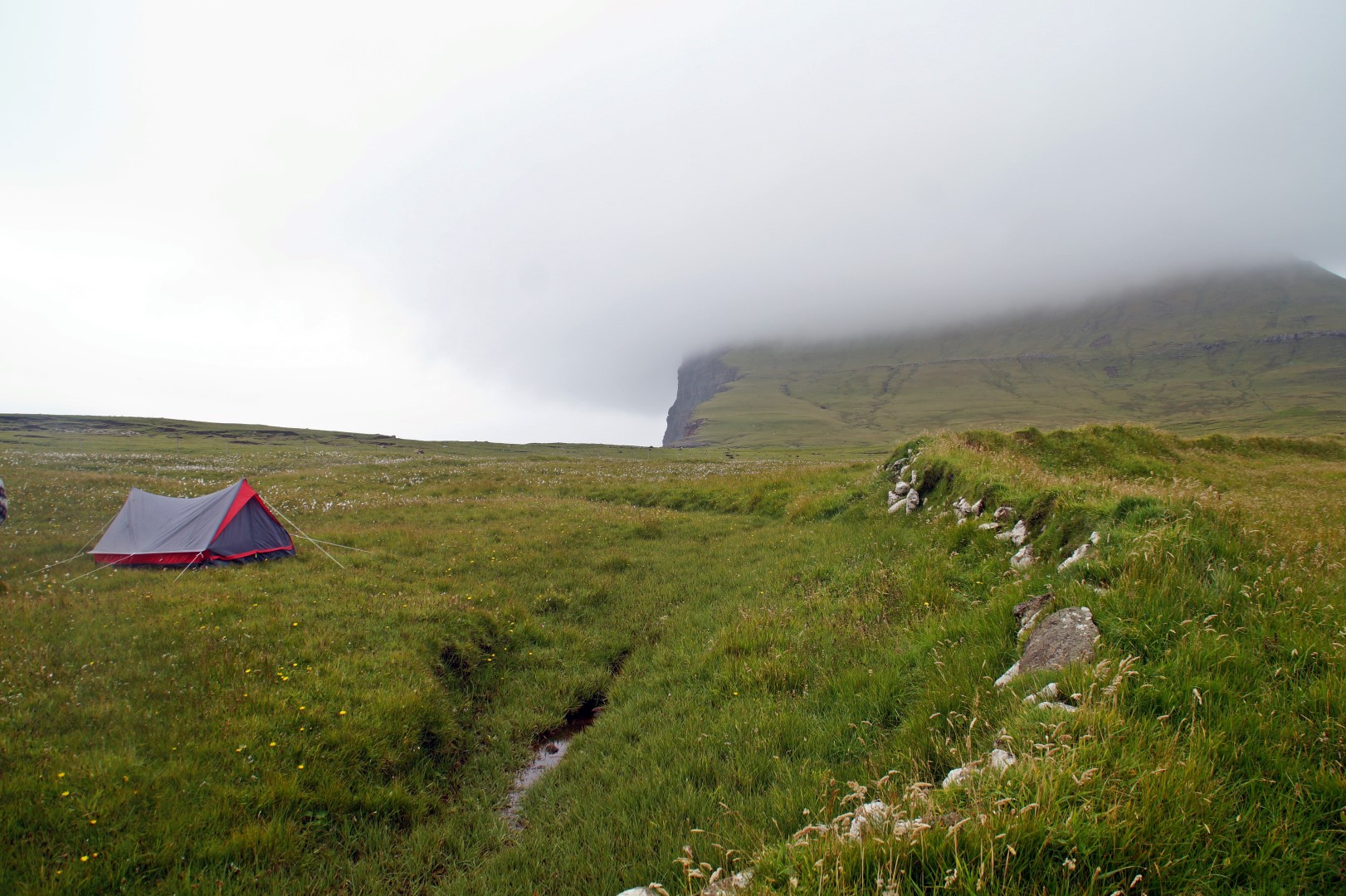
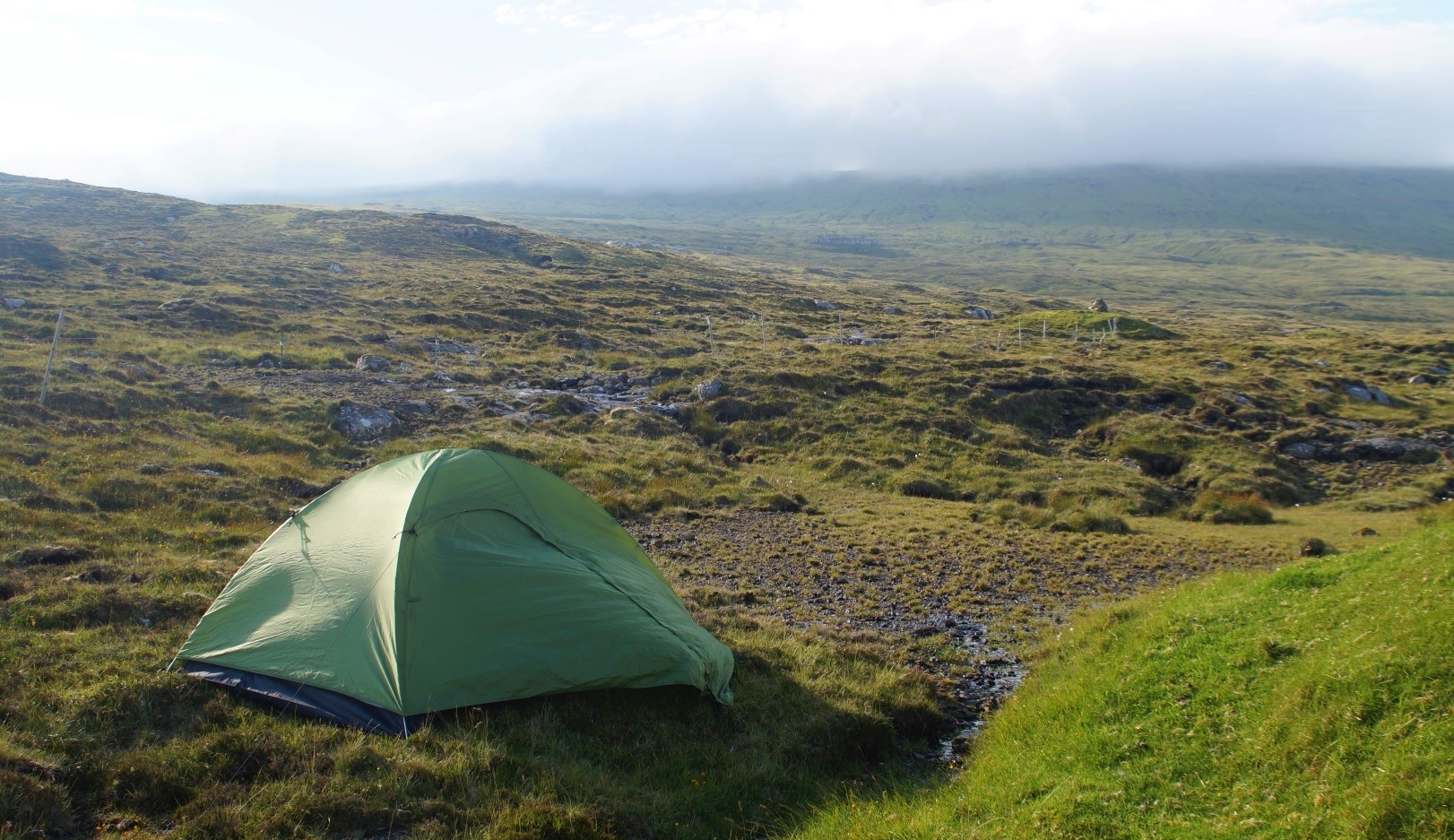

Leave a Comment